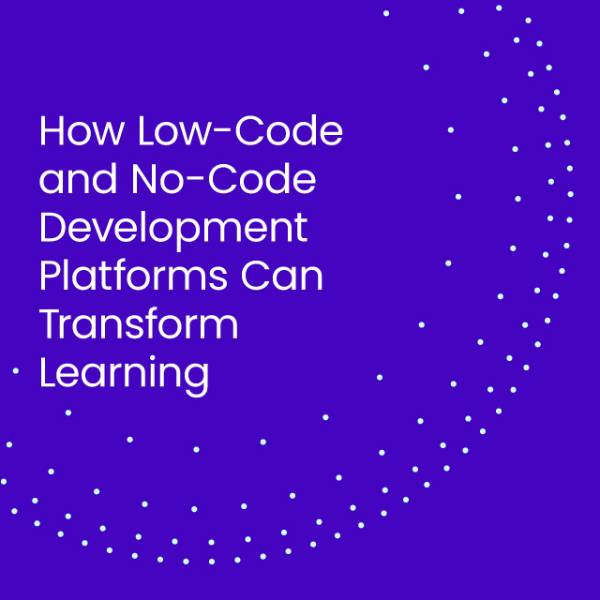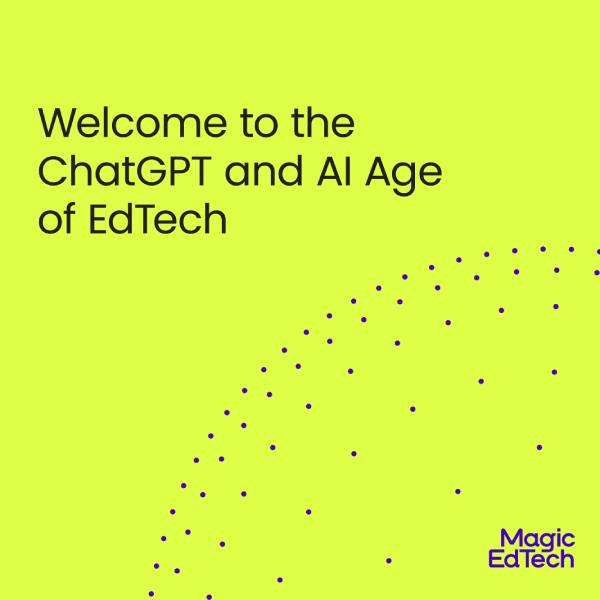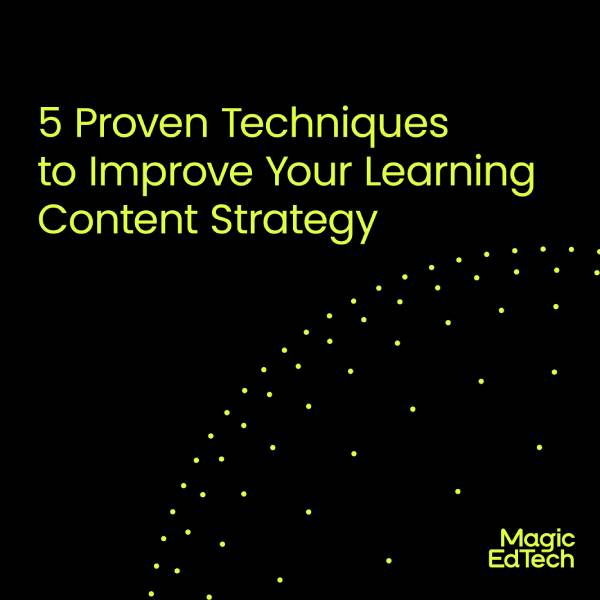Is Artificial Intelligence the Missing Link In Scaling Up Teacher Productivity: An Insight
- 3 May, 2023
- Reading Time: 9 mins
Even with some great innovation in the education technology (EdTech) space and great strides in improving the student learning experience, teacher productivity is one key area where EdTech fell short.
Despite the widespread proliferation of educational technology tools, educators are still burdened with responsibilities that detract from instructing and engaging with students. Nevertheless, implementing artificial intelligence (AI) within learning products for the classroom can mechanize specific responsibilities and liberate educators to concentrate on the most crucial elements of their vocation.
The focus of this article is to dive into the increasing prominence of AI in resolving issues of teacher efficacy. Also, we will look at how EdTech and publishing companies can integrate AI into their products to improve the learning experience. We discuss how to integrate AI into learning products to make them more accessible, personalized, and effective.
Teacher Productivity and Why It is Difficult to Scale with Current EdTech
No revolution is free of challenges, and EdTech has a similar story. One of the biggest challenges it faces is scaling teacher productivity. So, let’s take a closer look at what is currently happening.
- Teachers have to allocate substantial amounts of time to take care of administrative tasks, including but not limited to evaluating assignments, formulating curricula, creating lesson plans, and coordinating classroom undertakings.
- These tasks take up to 60% of their work hours, thus reducing the time they have to teach with efficacy and providing individualized attention to pupils.
- Current EdTech tools help in this area but only address a small part of the problem.
So, where does AI fit into this ecosystem?
Building and Grading Assessments
Out of all responsibilities, this particular task is very time-consuming for educators. Fortunately, with the capabilities AI offers right now, it can read answers, identify the underlying context, and suggest feedback. To build assessments, generative AI can formulate questions based on a single piece of text dwelling in formats like PDF or PPT. What’s more, is that these can be made accessible on the go and can feed right into a dashboard for personalizing learning.
Personalized Learning and Lesson Plans
AI can also personalize learning experiences for students. How? Integrating AI into every touchpoint in your edtech product can help analyze student data, identify knowledge gaps, track student interaction, and suggest tailor-made learning plans. On top of that, it enables teachers to design effective lesson plans and offer individual attention to students.
Handling Administrative Tasks
Teachers can use edtech products powered by AI to organize classroom activities and schedule meetings with parents. As a result, teachers can focus on their core responsibilities and improve their productivity.
How Can You Implement AI Into EdTech Products?
Integrating AI into EdTech products is not the most challenging part; the key lies in evaluating investments in AI to mitigate risks and security challenges and developing ethical pathways for growth. Until we have stronger frameworks for AI, involving a human-in-the-loop right from the development stages is critical to long-term solution success.
If scaling teacher productivity is crucial to the success of your EdTech business, take a quick look at some steps you can follow to implement AI into EdTech products:
Understand the Problem
Conduct a thorough analysis of the current landscape, different tools, and technology, and your offering to find and plug potential gaps. To implement AI into EdTech products for teaching, you must correctly identify your audiences’ pain points. Start by understanding the needs of teachers and students and speak to your AI consultants to identify areas in the product journey where AI can assist.
Incorporating AI within EdTech Products
Once you have identified the features you need to incorporate into your product or platform, reach out to a team that can build the features into the product effectively. You need a team with the right expertise in handling data science and machine learning. As AI algorithms get more complex, they get at performing specific tasks. But you also need a human-in-the-loop Once the AI algorithm is designed, you must integrate it into your EdTech product. It would be best if you considered collaborating with software developers and UX designers to ensure a seamless user experience.
Map Your Efforts to the Desired Learning Outcomes
Data collection is critical to measuring the effects of AI-powered tools and features that have been built into your edtech product. Be sure to collect data on teacher productivity, student performance, and learning outcomes. The data can be used to train the AI algorithm to understand patterns and weed out potential problems.
Professional Development for Teachers to Understand AI in the Classroom
As the role of AI increases in education, teachers must acquire basic knowledge of the technology and its potential uses. Here are some tips you can follow to deliver professional training to teachers to understand the role of AI in the classroom:
Start With the Basics
Before diving into the specifics of AI, ensure that your teachers have a solid foundation in the technology. Professional Development (PD) for AI is a growing concept and the need of the hour. Give them an overview of key concepts and terminologies like machine learning, natural language processing, and neural networks. And then elaborate on the workings of the product.
Focus On Practical Applications
Your teachers will engage better with professional development relevant to their teaching practice. Give them a clear understanding of how AI can enhance student learning, and help them personalize learning experiences or automate grading and assessment.
Let Them Experiment
The best way to understand AI is by allowing teachers to become students and letting them experiment with AI tools in a safe, low-stakes environment. If you give them access to educational resources and platforms that incorporate AI and encourage teachers to try different tools, they will likely figure out what works best for them and their students.
Foster Collaboration
AI is complex and evolves constantly, so no one person has all the answers. Therefore, let your teachers collaborate across different domains to share ideas. Create cohorts of early adopters and make them drive the adoption of your AI features throughout the institution.
Always Stay On Top of All the Updates
As AI technology evolves, letting your teachers stay on top of the latest developments and trends is an excellent idea. By giving them regular development opportunities on the latest AI tools, you add significantly to their skill set and encourage them to share their experiences and insights within relevant communities.
How Using the Right AI Products Enable Better Learning Efficacy
You can significantly enhance the effectiveness of educational products and systems with the right AI. Sophisticated AI algorithms can scrutinize data, identify students’ competencies and weaknesses, monitor their progress, and create customized educational programs to enhance their skills.
Furthermore, personalized feedback can increase the student’s comprehension of their learning procedures and facilitate more well-informed academic decisions in the future.
In addition, AI can help identify areas where students may need additional support, such as struggling with a particular concept or skill. Finally, AI can access large datasets to identify patterns and trends in student performance, allowing teachers to intervene early and provide additional support where needed.
By implementing AI in EdTech products, you can enable your teachers to focus on the most important parts of their jobs. Let’s try to understand this with the points below:
Automating Repetitive Tasks
You can use AI to automate repetitive tasks, like grading assignments or checking for plagiarism, freeing up valuable time for teachers to focus on more meaningful tasks.
Personalized Learning Experiences
By analyzing student data, AI can provide personalized learning experiences tailored to each student’s needs and abilities. This can help your teachers understand the needs of their students and provide targeted instruction.
Streamline Administrative Tasks
As discussed earlier, AI can be used to streamline administrative tasks like scheduling and record-keeping, reducing the time teachers spend on these tasks to help them focus on teaching.
Improving Assessment Methods
Teachers can use AI to improve assessment methods and provide immediate feedback on student work while identifying areas for improvement.
Note: If you want to implement AI into EdTech products, it is essential to involve your teachers in the development process to ensure that the technology meets their needs and is user-friendly. Providing training and support for teachers to learn how to use AI-enabled EdTech products effectively is also crucial for successful implementation.
Tips for Teachers to Comprehend the Role of AI in the Classroom
As AI is becoming an integral part of the educational ecosystem, almost every EdTech start-up is investing heavily in AI and focusing on improving teacher productivity. So, ensure you are not left behind as your competitors evolve their platforms into revenue-generating powerhouses.
Here are some best tips you can follow to ensure the professional development of your teachers when it comes to understanding AI in the classroom:
Attend Conferences and Workshops
Regular conferences and workshops help teachers understand the integration of AI in education. You should attend such events with your team to keep up with the latest trends and advancements in EdTech.
Take Online Courses
As we said earlier, to be a great teacher, you need to be a great learner. So, it’s a good idea to read a lot and take online courses if necessary to understand AI and its usage in education. Anyone involved in the project can take these courses, and teachers can learn more about their specific areas of expertise.
Join Online Communities
Collaboration is a must if you want to succeed in the EdTech space. You can connect with educators through multiple online communities and gain a deeper insight into AI and technology in education. In addition, these communities provide a platform for teachers to discuss and share their experiences and learn from others.
Collaborate With AI Experts
Teachers can collaborate with AI experts to gain insights into developing AI-powered EdTech products. This collaboration can help teachers gain a better understanding of how AI can be used to enhance student learning.
Engage In Self-Study
This applies to teachers, investors, and operators of an AI-powered EdTech platform. Engage in self-study by reading books, research papers, and articles on AI in education. This self-study can help you gain a fresh perspective on the concepts and applications of AI in education.
Partner with an EdTech Provider
You can partner with EdTech companies that develop AI-powered products to gain insights into the development and implementation of such products. This will be a win-win partnership as the experts can help you develop the right platform and offer learning materials for teachers to understand the functionalities and benefits of AI-powered EdTech products.
Conclusion
The need of the hour is to increase teacher productivity, and using AI in the classroom is the way to do it. You can improve your knowledge by attending conferences, taking online courses, joining communities, collaborating with AI experts, trying AI-powered tools, studying independently, or taking training programs. But, the fastest way to create your platform is to partner with an edtech provider specializing in it.
If you are seeking innovative solutions for your AI-centered educational needs we are committed to delivering personalized and effective learning experiences for students with adaptive learning tools, multimedia content, and advanced analytics that enable teachers to track student progress and customize instructions accordingly. To learn more about AI-centered solutions, get in touch with our experts to seamlessly integrate tailored AI tools into your educational platforms.





